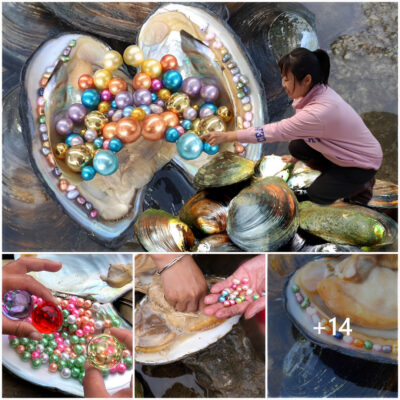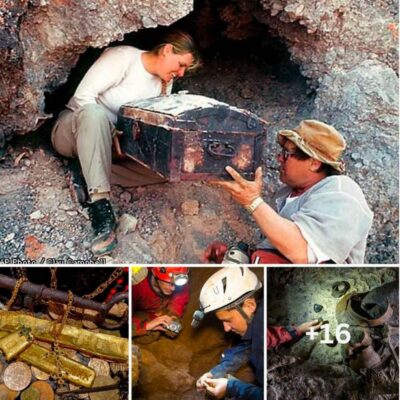The mummy dubbed the Younger Lady was found with two other mummies in side chamber Jc of KV35. This again was a cache of looted New Kingdom mummies placed there by priests from the Third Intermediate Period. The Elder Lady and the mummy of a young boy were found next to her. The Elder Lady has now been identified as Queen Tiye, wife of AmenH๏τep III, and the young boy is suspected to either be Prince Tuthmose or Webensenu.

All three of these mummies were completely naked, with no wrappings or coffins. Other mummies in this cache were found in labeled coffins or were given linen dockets to identify them. This of course adds to the mystery of why these three mummies were treated so differently from those in the rest of the cache. The Younger Lady is also called KV35YL or 61072, the latter of which is her accession number at the Cairo Museum.
Mummy
The mummy of the Younger Lady was originally determined to be of a man by Loret, the archaeologist who discovered the tomb. This mistake was probably made because of the mummy’s shaved head, which was typical of male Egyptians. When G. Elliot Smith later examined the mummy, he determined that it was of a female.

She was anywhere from 25 to 35 years old when she died. She was 5 foot 2 inches tall and quite thin. The mummy is in very bad condition, though only some of the wounds were postmortem.
The only perimortem (before death) injuries are those found on the face. The Younger Lady has a gaping wound on the left side of her mouth and cheek. Some fractured facial bones are missing and a roll of resin-soaked linen was placed in the wound by the embalmers. Scholars have determined that this wound would have likely been fatal, but they have not determined how this injury occurred. It could have been the result of a heavy object hitting her face, the Younger Lady getting kicked in the face by an animal like a horse, or a chariot accident. There are also theories of deliberate violence like her being hit with an ax.
The other injuries can be attributed to the looters. She has a small oval-shaped hole in the front of her skull and bone fragments were found within the cavity. Apparently, there was no attempt to embalm or remove her brain as it is found shrunken in her skull. The front wall of her chest is also almost entirely missing. Her heart was left in place and remains visible in her chest cavity. The diaphragm had two holes where the lungs were removed in the embalming process. In addition, her torso was packed with linen.
Her pelvis was fractured, her legs damaged, and the front half of both of her feet are missing. She also had a double piercing on her left earlobe. Finally, her right arm is missing. Two severed arms were found in KV35 and compared with the body. One was bent at the elbow and would have laid over her chest, while the other was straight. At first, the bent arm was believed to be hers, but it was proven to be too long in relation to the attached arm. So, it is believed that the other straight arm which is of equal size is the matching arm.
There have been multiple theories about the idenтιтy of this mummy. G. Elliot Smith believed that she lived during the reign of AmenH๏τep II, but many of the more recent theories push this toward the reign of AmenH๏τep III and his son.
Marianne Luban proposed that the Younger Lady was Queen Neferтιтi in 1999, a theory that has taken a life of its own. She based this mostly on the measurements between the mummy and the statue of Neferтιтi, which were very close in size. She also pointed out the shaved head, the impression of a headband on her forehead, and the double ear piercing, all of which could point to a royal mummy.
Joanne Fletcher supported this claim in 2003 pointing out all the same evidence that Luban did. She was actually allowed to examine the Younger Lady, which is when they found one of the detached arms wrapped in the bandages by her legs. But this was the flexed arm, which as I mentioned most likely does not belong to the Younger Lady. Fletcher used this as evidence that the mummy was royal because female royal mummies have one arm down and one arm flexed over the chest. But this is not a definitive factor as there are royal female mummies who have both arms down.
Dennis Forbes proposed that the mummy is Sitamun, a daughter of AmenH๏τep III and Tiye. This theory was based on the two other mummies found with the Younger Lady, the Elder Lady, and the young boy. Again the Elder Lady has been identified as Tiye, Sitamun’s mother, and one of the main theories for the idenтιтy of the mummy of the young boy is Prince Tuthmose, Sitamun’s brother.
DNA Tests
The other theories are mostly based on DNA tests were conducted on the mummy. These were conducted between 2007 and 2009 for the Cairo Museum’s Family of King Tutankhamun Project. These results told us that this woman was the daughter of AmenH๏τep III and Tiye, the full sister of the mummy found in KV55, who is presumably Akhenaten, and the mother of King Tutankhamun!!
Based on the DNA results (which you can read more about here), most scholars believe that the mummy is not Neferтιтi or Kiya, another wife of Akhenaten who had been considered Tutankhamun’s mother. This is because neither woman was ever referred to as the King’s Sister or King’s Daughter. These тιтles would have been used throughout their life, even after they married. So because Neferтιтi and Kiya are never shown with these тιтles, they have been excluded as possible daughters of AmenH๏τep III and Tiye.
Sitamun, Isis, and Hennuttaneb are three daughters of AmenH๏τep III that have been considered but also excluded based on тιтles. These three daughters were married to their father at the end of his reign. And because of that prestigious тιтle, they would have become Akhenaten’s principal wife if he wanted to marry them. Meaning they would have taken precedent over Neferтιтi, who was a non-royal, which we know didn’t happen. Nebptah and Beketaten are two other daughters of AmenH๏τep III who were not known to have married their father, so they are likely candidates.
Nonetheless, even though she was the daughter, sister, married to, and mother of a king, she does not seem to be a prominent figure in her lifetime. No inscriptions, reliefs, or statues have even been found of her. Nothing in King Tutankhamun’s vast tomb even references her. All evidence points to his mother dying before he rose to the throne and that she was a minor wife of Akhenaten. There is also a slim possibility that this woman was not married to Akhenaten, but part of his harem.
Facial Reconstruction and Controversy
In 2018, the mummy of the Younger Lady was featured on the seventh episode of the fifth season of Expedition Unknown, enтιтled “Great Women of Ancient Egypt.” Josh Gates the host and his guests were all under the presumption that the Younger Lady is the mummy of Neferтιтi, which is a belief some scholars still hold. They used the preserved remains, modern technology, and artistry to present a reconstruction of what the Younger Lady looked like. The bust was created by French paleo-artists Elisabeth Daynes.
Again, because they presumed that the mummy was of Neferтιтi, the reconstruction wore Neferтιтi’s iconic crown and broad collar. Putting aside the controversial choice to depict the mummy as Neferтιтi after the DNA tests had most likely ruled her out, the reconstruction received a lot of controversies.
Many people were upset with the color of her skin tone, mainly it being too light. The artists said that it was compared to the skin ton of modern Egyptians, but many were concerned that she was being white-washed. Some scholars agreed, but other scholars pointed out that there would have been a great mixture of races in the royal harems, including Caucasians. But the Younger Lady would have most certainly been more brown.
Aside from the royal regalia and the color of her skin, the face is claimed to be forensically accurate to the face of the Younger Lady.











